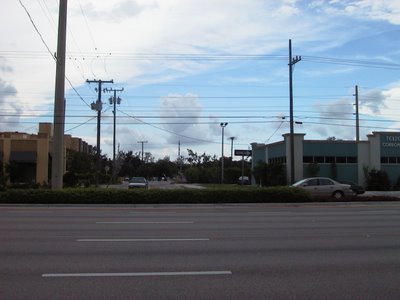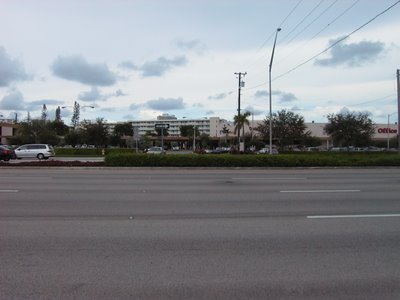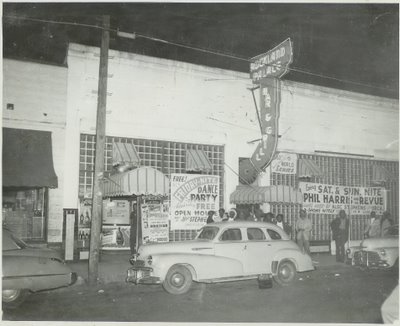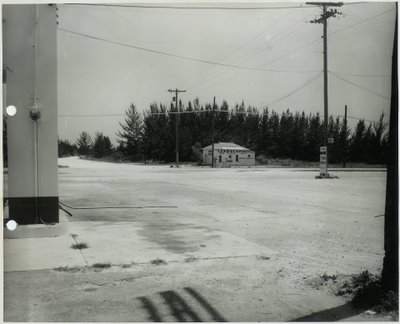What a Wonderful World Department
Trident Green Apple Fusion gum.
Tuesday, October 31, 2006
Monday, October 30, 2006
Clfford Geertz Died Today
Clifford Geertz Died Today
The preeminent cultural anthrolpologist of his time, the erudite, humorous, and lyrical writer, a consummate American, is dead. He had such an effect on my intellectual life and on the lives of so many others so much more important. I am Benjamin Harris.
The preeminent cultural anthrolpologist of his time, the erudite, humorous, and lyrical writer, a consummate American, is dead. He had such an effect on my intellectual life and on the lives of so many others so much more important. I am Benjamin Harris.
Thursday, October 26, 2006
This is Islam in its own words
This is Islam in its own words
"If you take out uncovered meat and place it outside...without proper cover and the cats come to eat it...whose fault is it, the cats' or the uncovered meat's? The uncovered meat is the problem. If she was in her room, in her home, in her hijab no problem would have occurred." Sheik Taj Aldin al Hilali, top cleric at the largest Mosque in Sydney, Australia. This is Islam in its own words.
 PUBLIC OCCURRENCES
PUBLIC OCCURRENCES
"If you take out uncovered meat and place it outside...without proper cover and the cats come to eat it...whose fault is it, the cats' or the uncovered meat's? The uncovered meat is the problem. If she was in her room, in her home, in her hijab no problem would have occurred." Sheik Taj Aldin al Hilali, top cleric at the largest Mosque in Sydney, Australia. This is Islam in its own words.
Wednesday, October 25, 2006
Murder Case Photographs -#23 Then and Now

 Murder Case Photographs- #23, Then and Now
Murder Case Photographs- #23, Then and Now(2006)
The photo at far left is looking at the exact spot in the same direction as in the 1955 photo. The other photo is the same location but looking in the opposite direction.
If you took a photograph of a murder scene in New York City, say Times Square, in 1955, and then took another one in 2006, you'd be able to recognize the location easily. Not here. New York is an old city with a lot of history. This is a city that people have moved to to make new history out of sandy roads and mom and pop landscaping shops.
Tuesday, October 24, 2006
Murder Case Photographs- #22

(1954)
There was some trouble here at this homey-looking bar back in 1954. Big trouble, a murder. This photograph was actually marked by a witness at the trial. The X right in the middle of the picture is the witness's. (S)he is identifying someone with that mark, maybe the killer, maybe him/herself. And then there's the "LS", "LR" marks appended to a female.
As other photographs in this series have shown, there was a vibrant African-American community in this city during segregation. This looks like a respectable bar, not a dive.
One unexpected thing about having all of these photos from all of these different murders, the vast majority are African-American. Black on black killings too, then as now. I was under the impression that Black crime really took off in the 1960's. Maybe it did but not from the evidence of these 1950 murder files.
-I am Benjamin Harris.
Monday, October 23, 2006
Murder Case Photographs- #21 Then and Now
Murder Case Photographs- #21 , Then and Now 1954
, Then and Now 1954
The house number here was 1384 which doesn't exist today (below). Today the numbers go from 1382 to 1386 so right in the middle of the two houses below is where this one once stood.
This homicide detective, whom I don't know, had to be one of the first African-American people to reach that elite level. That alone makes this photo noteworthy. However there are some other things to see here. Enlarge the picture and look at the detective's eyes. Do you see how he is staring at the blood stain? That is the look that everyone gets from time to time in this business when you have to look at a murder victim or what's left behind, the blood. It grips you. I have never gotten used to seeing a murder victim and if I don't have to I won't. We get used to the work--we can eat lunch with a spread of bloody photos on our desks--and so did this detective but there are always those moments when we're not engrossed in our jobs and we just look at what is around us. I have seen this look many times on others faces and you respect it. You don't kid the person about it--"What are you staring at? You never saw a little blood below?"--I never heard anyone say anything like that. You respect what has happened and the humanity in your fellow coworkers when they get this look and you love them and this work all the more.
The other noteworthy thing about this photograph is its locale. This side of the street is, and was then, a middle-class African-American neighborhood of single family homes. However right across the street from here, where the cameraman is standing to take the "now" shot is the most notorious government housing project in this city. "Was" is the better word. It is now a shell of row after row of two story apartment buildings, the windows all broken out, crumbling, home only to a few homeless crack addicts. Literally right across the street. We have failed so much. The people who lived there and turned to drugs and thefts, robberies and murders, they failed. We who built these grotesqueries failed to provide those residents with the job opportunities that produce pride in ownership as opposed to resentment at a handout that breeds contempt, contempt in the residents to the governmental officials who condescended to put them here, hoping that they will be quiet and be out of sight, contempt by those governmental officials and the rest of us for those lazy, don't-want-to-work freeloaders. Lot of failure here.
 PUBLIC OCCURRENCES
PUBLIC OCCURRENCES
 , Then and Now 1954
, Then and Now 1954The house number here was 1384 which doesn't exist today (below). Today the numbers go from 1382 to 1386 so right in the middle of the two houses below is where this one once stood.
This homicide detective, whom I don't know, had to be one of the first African-American people to reach that elite level. That alone makes this photo noteworthy. However there are some other things to see here. Enlarge the picture and look at the detective's eyes. Do you see how he is staring at the blood stain? That is the look that everyone gets from time to time in this business when you have to look at a murder victim or what's left behind, the blood. It grips you. I have never gotten used to seeing a murder victim and if I don't have to I won't. We get used to the work--we can eat lunch with a spread of bloody photos on our desks--and so did this detective but there are always those moments when we're not engrossed in our jobs and we just look at what is around us. I have seen this look many times on others faces and you respect it. You don't kid the person about it--"What are you staring at? You never saw a little blood below?"--I never heard anyone say anything like that. You respect what has happened and the humanity in your fellow coworkers when they get this look and you love them and this work all the more.
The other noteworthy thing about this photograph is its locale. This side of the street is, and was then, a middle-class African-American neighborhood of single family homes. However right across the street from here, where the cameraman is standing to take the "now" shot is the most notorious government housing project in this city. "Was" is the better word. It is now a shell of row after row of two story apartment buildings, the windows all broken out, crumbling, home only to a few homeless crack addicts. Literally right across the street. We have failed so much. The people who lived there and turned to drugs and thefts, robberies and murders, they failed. We who built these grotesqueries failed to provide those residents with the job opportunities that produce pride in ownership as opposed to resentment at a handout that breeds contempt, contempt in the residents to the governmental officials who condescended to put them here, hoping that they will be quiet and be out of sight, contempt by those governmental officials and the rest of us for those lazy, don't-want-to-work freeloaders. Lot of failure here.
Sunday, October 22, 2006
On Iraq and Bush
On Irag and Bush
This started as a war blog and probably half of the articles here are on the war and related issues. However we have not assessed the war and the president in total. Thus this post.
The United States should have, as it did, effect regime change in Iraq.
The United States should get out of Iraq today.
It should have gotten out of Iraq the day that Saddam Hussein was captured.
We should not have attempted nation-building in Iraq one, because that should not be the mission of our armed forces and two because this was particularly infertile soil in which to attempt to plan the seeds of democracy.
The military plan to oust Hussein's regime was brilliantly executed.
The president and his foreign policy team deserve all credit for that military plan.
There should not have been a "post-end-of-major-hostilities" place for American troops in Iraq. After capturing Hussein we should have thrown a copy of The Federalist Papers at that and left.
We believe that the president was motivated by pure motives in attempting to establish a democratic Iraq. There were some signs, such as the first national election, that the transformation could happen. That possibility has long disappeared and whenever that long ago point was reached the blood of American soldiers stained the president's hands, tragically.
We judge the president a failure for the nation-building effort but we do not condemn him so harshly because he tried to do a noble thing. This is Public Occurrences.
This started as a war blog and probably half of the articles here are on the war and related issues. However we have not assessed the war and the president in total. Thus this post.
The United States should have, as it did, effect regime change in Iraq.
The United States should get out of Iraq today.
It should have gotten out of Iraq the day that Saddam Hussein was captured.
We should not have attempted nation-building in Iraq one, because that should not be the mission of our armed forces and two because this was particularly infertile soil in which to attempt to plan the seeds of democracy.
The military plan to oust Hussein's regime was brilliantly executed.
The president and his foreign policy team deserve all credit for that military plan.
There should not have been a "post-end-of-major-hostilities" place for American troops in Iraq. After capturing Hussein we should have thrown a copy of The Federalist Papers at that and left.
We believe that the president was motivated by pure motives in attempting to establish a democratic Iraq. There were some signs, such as the first national election, that the transformation could happen. That possibility has long disappeared and whenever that long ago point was reached the blood of American soldiers stained the president's hands, tragically.
We judge the president a failure for the nation-building effort but we do not condemn him so harshly because he tried to do a noble thing. This is Public Occurrences.
Tuesday, October 17, 2006
"This blog gives me a headache."
Sunday, October 15, 2006
On North Korea
On North Korea
The proximate cause of the current crisis is President Bush's inclusion of the DPRK in his Axis of Evil speech,* now discredited and forgotten by all save the North Koreans. That the fault is ours obviously does not get us out of the responsibility to act if we must.
Must we? This page has argued for a scaling back of America's presence abroad, particularly when that presence was created by diplomatic structures that are irrelevant today.** Thus, we should end our protective agreement over Taiwan; that is a cold war relic. Similarly with our alliance with South Korea. North Korea does not threaten us. The communist threat to America is gone, so should be alliances whose purpose was to "contain" communism.
However the alliance cannot be ended in the middle of a crisis. There are thousands of American troops in the South; the South Koreans have relied on them for protection. Ending the alliance must be done with enough time for the South to build its defenses so that it can stand on its own.
All of the above also applies to the American protectorate over Japan, another country being threatened by the DPRK.
So we must act. What should we do? Give in. Those are not words that have ever been written here before. We should give the DPRK. what it wants: face to face negotiations with us, and aid.
We should do it because (1) it has a good chance of ending the crisis, and (2) because the alternative is a conflict that would kill thousands and perhaps would be fought with nuclear weapons.
Giving in would hold out the hope of returning the peninsula to the status quo ante, which was a pretty good ante looking back on it. North Korea was being controlled before the Axis of Evil speech. Like a floridly psychotic person it was being kept in a straitjacket in a quiet, padded room and administered medication.
Giving in would give the DPRK the attention and respect it craves. What skin is it off our nose? It defuses the present crisis. There are two possible future outcomes: one, the DPRK. collapses of its own weight, in which event we would have avoided the thousands of deaths that a military conflict would have brought. Two, the DPRK. violates new agreements before it has a chance to collapse. Even if that's only a couple of years from now it would give the South and Japan some time to build up their defenses, and if American firepower would be deemed necessary we would be in no worse a position to use it than we are today. Give in. This is Public Occurrences.
* "All We Are Saying...", Publocc May 11, 2003.
** For a Foreign Policy Influenced by Principles of Federalism, June 30, 2002.
The proximate cause of the current crisis is President Bush's inclusion of the DPRK in his Axis of Evil speech,* now discredited and forgotten by all save the North Koreans. That the fault is ours obviously does not get us out of the responsibility to act if we must.
Must we? This page has argued for a scaling back of America's presence abroad, particularly when that presence was created by diplomatic structures that are irrelevant today.** Thus, we should end our protective agreement over Taiwan; that is a cold war relic. Similarly with our alliance with South Korea. North Korea does not threaten us. The communist threat to America is gone, so should be alliances whose purpose was to "contain" communism.
However the alliance cannot be ended in the middle of a crisis. There are thousands of American troops in the South; the South Koreans have relied on them for protection. Ending the alliance must be done with enough time for the South to build its defenses so that it can stand on its own.
All of the above also applies to the American protectorate over Japan, another country being threatened by the DPRK.
So we must act. What should we do? Give in. Those are not words that have ever been written here before. We should give the DPRK. what it wants: face to face negotiations with us, and aid.
We should do it because (1) it has a good chance of ending the crisis, and (2) because the alternative is a conflict that would kill thousands and perhaps would be fought with nuclear weapons.
Giving in would hold out the hope of returning the peninsula to the status quo ante, which was a pretty good ante looking back on it. North Korea was being controlled before the Axis of Evil speech. Like a floridly psychotic person it was being kept in a straitjacket in a quiet, padded room and administered medication.
Giving in would give the DPRK the attention and respect it craves. What skin is it off our nose? It defuses the present crisis. There are two possible future outcomes: one, the DPRK. collapses of its own weight, in which event we would have avoided the thousands of deaths that a military conflict would have brought. Two, the DPRK. violates new agreements before it has a chance to collapse. Even if that's only a couple of years from now it would give the South and Japan some time to build up their defenses, and if American firepower would be deemed necessary we would be in no worse a position to use it than we are today. Give in. This is Public Occurrences.
* "All We Are Saying...", Publocc May 11, 2003.
** For a Foreign Policy Influenced by Principles of Federalism, June 30, 2002.
Saturday, October 14, 2006
Often Wrong, Always Certain
Often Wrong, Always Certain
In college tackle football next weekend the University of Pittsburgh "Panthers" will defeat the Rutgers "Scarlet Knights."
In college tackle football next weekend the University of Pittsburgh "Panthers" will defeat the Rutgers "Scarlet Knights."
Monday, October 09, 2006
Murder Case Photographs- #20

Murder Case Photographs- #20
1955
Is it impossible to take an ugly photograph in black and white? Consider the subject matter of this photograph. It is wearyingly pedestrian: a crime scene technician holds the murder gun with a pencil insert to preserve any latent fingerprints.
Pedestrian--and goofy--which is the reason why this photograph was chosen for this series rather than hundreds of others. God bless this guy but I hope none of his grandkids ever see this photo. His eyeglass frames are archaic and boring, he wears a dweebie bow-tie (were those things ever in?), and his EYES ARE CLOSED. Oh god.
What good did this photograph do for the prosecution who introduced it into evidence at the trial for the jury to see? They had the gun to introduce. Why this photo? What was the reaction of the jurors? "Hey, Ralph look at this one. Pretty impressive, huh? The defendant must be guilty with earnest public servants like this guy working on his case."??? Or, "Ooh, Betty look at this one! Isn't he gorgeous? There's just something about a cop." ???
But however pedestrian and goofy, aesthetically this is an awesome photograph. The background is a dramatic matte black. It looks like deep-field space and the white in the photograph stands out like stars against iT, even if it's Technician Dweeb's ears that are the twinkle-twinkles. The camera's flash bleaches out the shirt fabric, the flash explodes off the gun metal and back at the viewer. This photograph is gorgeous even if Technician Dweeb is not.
Sunday, October 08, 2006
This is Islam in its own words
"Since the objective of Islam is a decisive declaration of man's freedom, not merely on the philosophical plane but also in the actual life, it must employ jihad. It is immaterial whether the homeland of Islam--in the true Islamic sense, dar al-Islam--is in a condition of peace or whether it is threatened by its neighbors. When Islam calls for peace, its objective is not a superficial peace requiring only that part of the earth where the followers of Islam are residing remain secure. The peace of Islam means that din [the law of society] be purified for Allah, that all people should obey Allah alone, and every system that permits some people to rule over others be abolished."
Sayyid Qutb, Milestones, p.51. This is Islam in its own words.
Sayyid Qutb, Milestones, p.51. This is Islam in its own words.
Thursday, October 05, 2006
Murder Case Photographs- #19, The Rockland Palace, Then and Now
 Murder Case Photographs- #19, The Rockland Palace, Then and Now.
Murder Case Photographs- #19, The Rockland Palace, Then and Now.1952
There was a vibrant African-American cultural life here in 1952 even in the midst of segregation. Then the Interstate Highway was put through this politically most expendable part of town (see #17 in this series below, September 12, 2006). That killed the residential areas and without residents there wasn't any social life to cater to. Below, a vacant lot is all that marks this spot, a ghostly footprint of The Rockland Palace.
Wednesday, October 04, 2006
To the Nations of the World

To the Nations of the World
Please rename yourselves in a more distinctive manner. What is the difference between Slovenia and Slovakia? Between them and Serbia and Montenegro? Why does S&M have two names, like Trinidad and Tobago? It's very cumbersome and busy. If you want separate countries, fine! The Serbs can have theirs and the...other people can have theirs too. But if you choose to have ONE country then you have to have ONE name. That's the rules. Just combine your two names into a new one, "Serbnegro," for example.
Also do something with the flags. Are there no graphic designers in your countries? The U.S. should sue Malaysia for copyright infringement.
All these damn bars--India, France, Belgium, Egypt, Mexico. That's grade school level creativity. If there was a war between any combination of Romania, Belgium and Moldova there would be mass confusion. Belgium: black, yellow, and red vertical stripes; Moldova: blue, yellow, and red, with a little crest thing on the yellow; Romania: blue, yellow (sans crest) and red.
And then there's Italy: green, white, and red vertical bars; Mexico green, white (with a crest), and red. India: orange, white (with a Green crest), and green horizontal stripes; Iran: green, white (with a RED crest), and red horizontals.
The coolest flags are the simplest and most distinctive: Finland's horizontal blue cross on a white field, Canada's red maple leaf, Israel's Star of David. Could we make a suggestion to Muslims? We know you're all just one country. Don't think you're fooling us with those 57 varieties of "stans." So adopt a universal flag, one that instantly identifies who you are:
Turbanbombistan! On an Islamic-green field of course. And, if you want, surrounded by a circle of flaming sticks of dynamite each representing a Muslim state. You're welcome. This is Public Occurrences.



